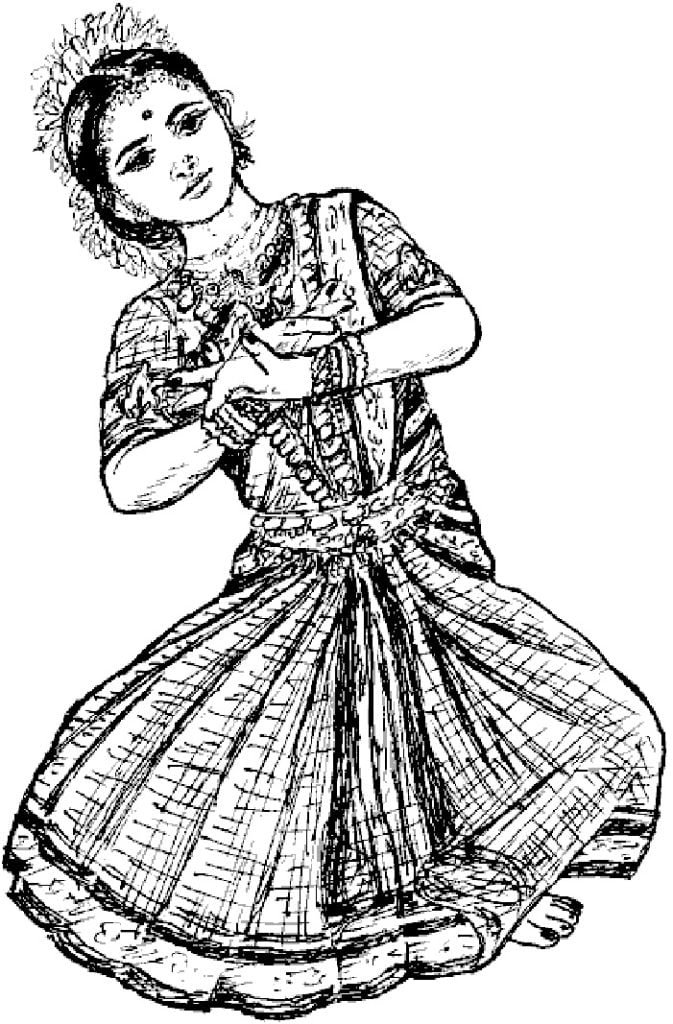Classical dances and music are the precious part of our cultural heritage. Dance is natural manifestation of joy with romantic sentiment and body movements getting in harmonic rhythms. Our ancient gurus set this manifestation in classical format to make it a form of art. Rhythm and movements are basic to dance, life and creative sentiment. Humans, animals, birds, fish, vegetation, sea waves, air and earth, all are engaged in ceaseless cosmic dance act. The very life is just continuation of cosmic dance and death is end of the dance. Human soul dances its way to higher levels of consciousness to reach the God Rhythm.
Indian classical dances are deeply religious in their origin. In spiritual senses the classical dances can be best understood and appreciated. All our dance forms, music and the other arts are based on the firm foundation of meditation and spiritual discipline. The dances are nothing but meditation in motion and harmonisation of physical rhythms with spiritual sentiments. They are highly developed and stylished. The technique remains unchanged like seasons of nature yet are innovative just as nature renews its moods every year. The principles and rules laid down by Bharata Muni in his Natyashastra are strictly adhered to. Our classical dances are famous all over the world. 101 dancing styles are listed in the above shastra. It is believed that in all there are around 180 dance styles. They are depicted on the temple walls and pillars in sculptured forms. Following are the most famous and popular classical dances of India :
❑ Bharat Natyam ❑ Manipuri
❑ Kathak ❑ Odissi
❑ Kathakali
Bharat Natyam is flag bearer of Indian classical dances. It is more popular in South India but is now catching up in North as well. This oldest dance form is associated with Shiva. It is a solo dance form and is the most complex. It has three component—movement, mime and music. The three combine to create the Bharat Natyam dance. It is based on the sentiments of love, romance and heroism. There is a touch of eroticism as well. A combination of abstract and expressive this dance form is.
Kathak is major dance form of North India. Both sexes perform it. It is known for its spontaneity and freedom from uniformity. Kathak allows room for innovation and improvisation. A Kathak dancer combines mime with music and dance.
In Kathak the performing artist combines mime with music and dance and interprets the song to the accompaniment of the soft strains of Sarangi or Sitar. It makes generous use of Hindustani musical compositions like Dhrupad, Hori, Dhamal, Pada, Bhajan, Thumari, Gazal and Dadra.

Kathakali is traditional dance play of Kerala. The performer wears a stylised mask. The dance is performed in open air with a tall massive brass lamp in the centre of the stage. The dance starts with the thundering beats of drum called Chhenda. Episodes from epics are narrated through dance and drama.
Manipuri dances are based on romance of Lord Krishna and Radha. It was formalised, stylised and codified in stages by great gurus. In this dance movements of neck, breasts and hips are not allowed to keep out vulgarity. Khol, mridanga, manjira and flutes make up the instrumental accompaniments.
Odissi is originated from Orissa and is highly inspired, ecstatic, sensuous and impassioned. It is performed to the accompaniment of rhythmic vocal syllables blended into drum beats. The chant of musicians, the beat of drum and the rhythmic foot steps of the danseuse create a magic atmosphere. Lasya and Tandava classical dances are best performed in this style.
Thus, Bharat Natyam is dedicated to Lord Shiva. Manipuri mainly dwells on the romance of Krishna and Rahda. Kathakali narrates the episodes from Ramayan, Mahabharata and Puranas. Khatak and Odissi use various themes.
Some of the names who brought glory to classical dance forms at home and abroad are namely, Lachchhu Maharaj, Birju Maharaj, Sonal Man Singh, Swapna Sundri, Raja and Radha Reddy, Leela Sampson, Uma Sharma etc. Many of them run their own dance institutions to pass on the classical dance traditions to the young generation to keep this art alive.

